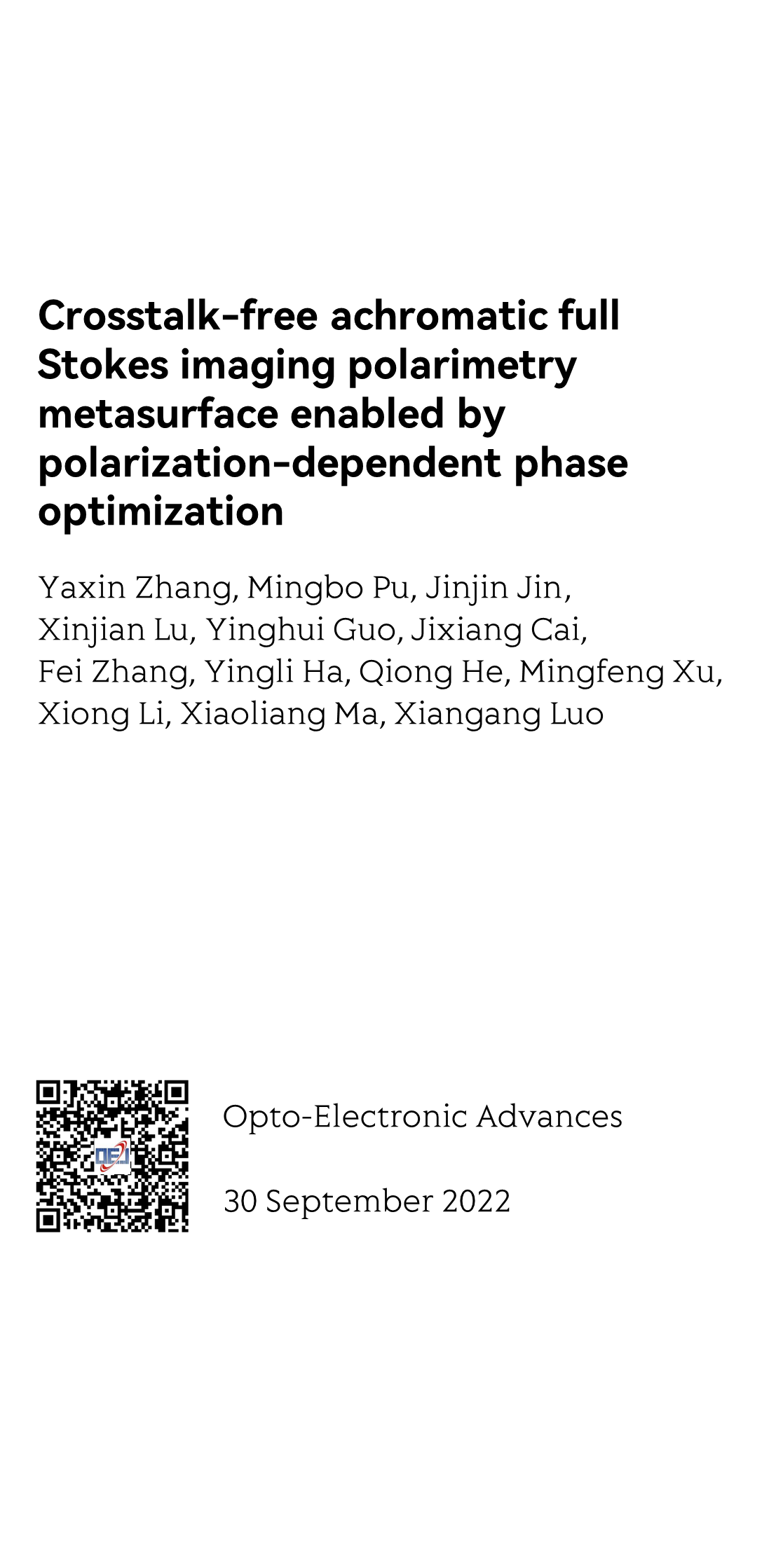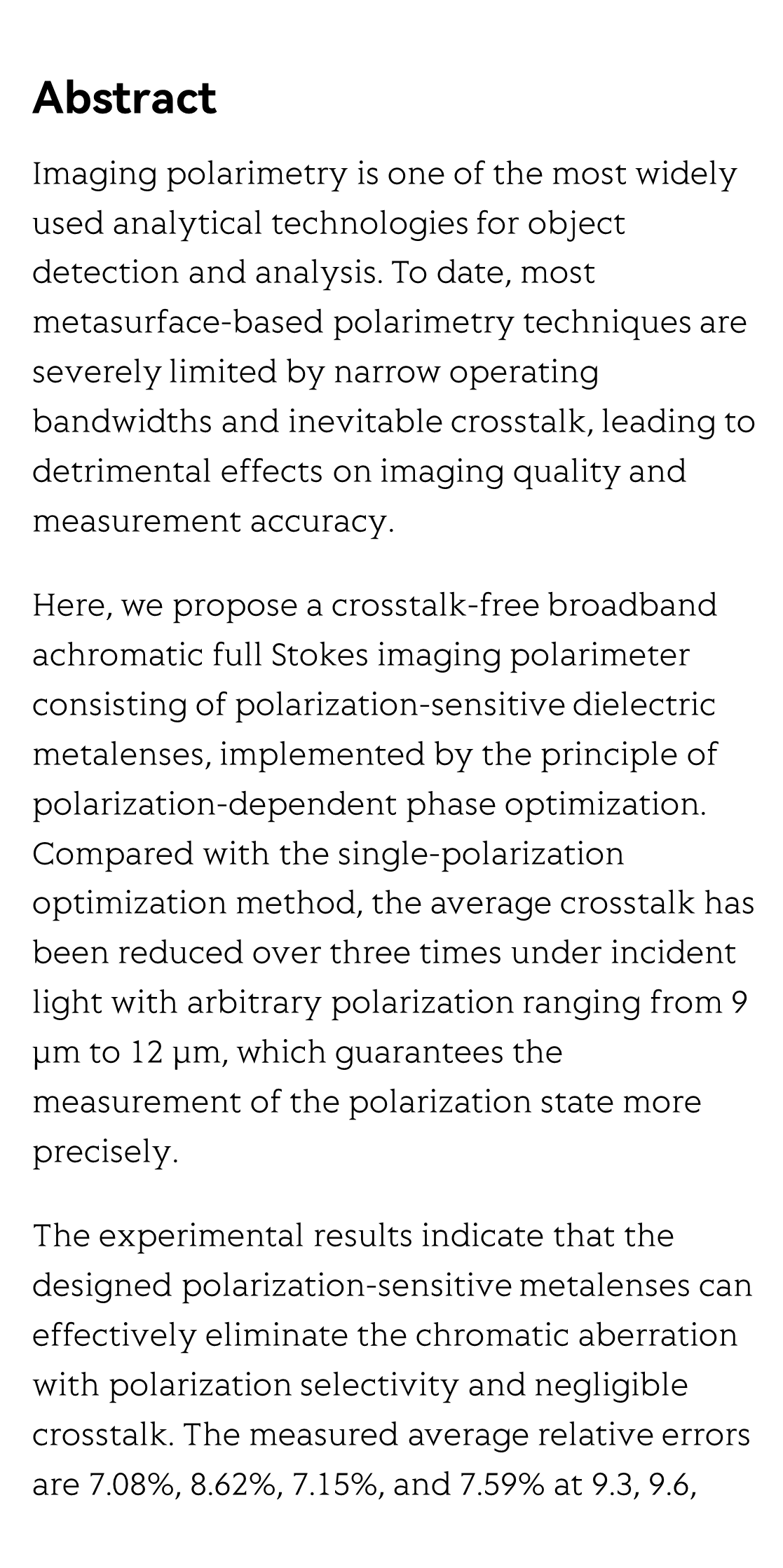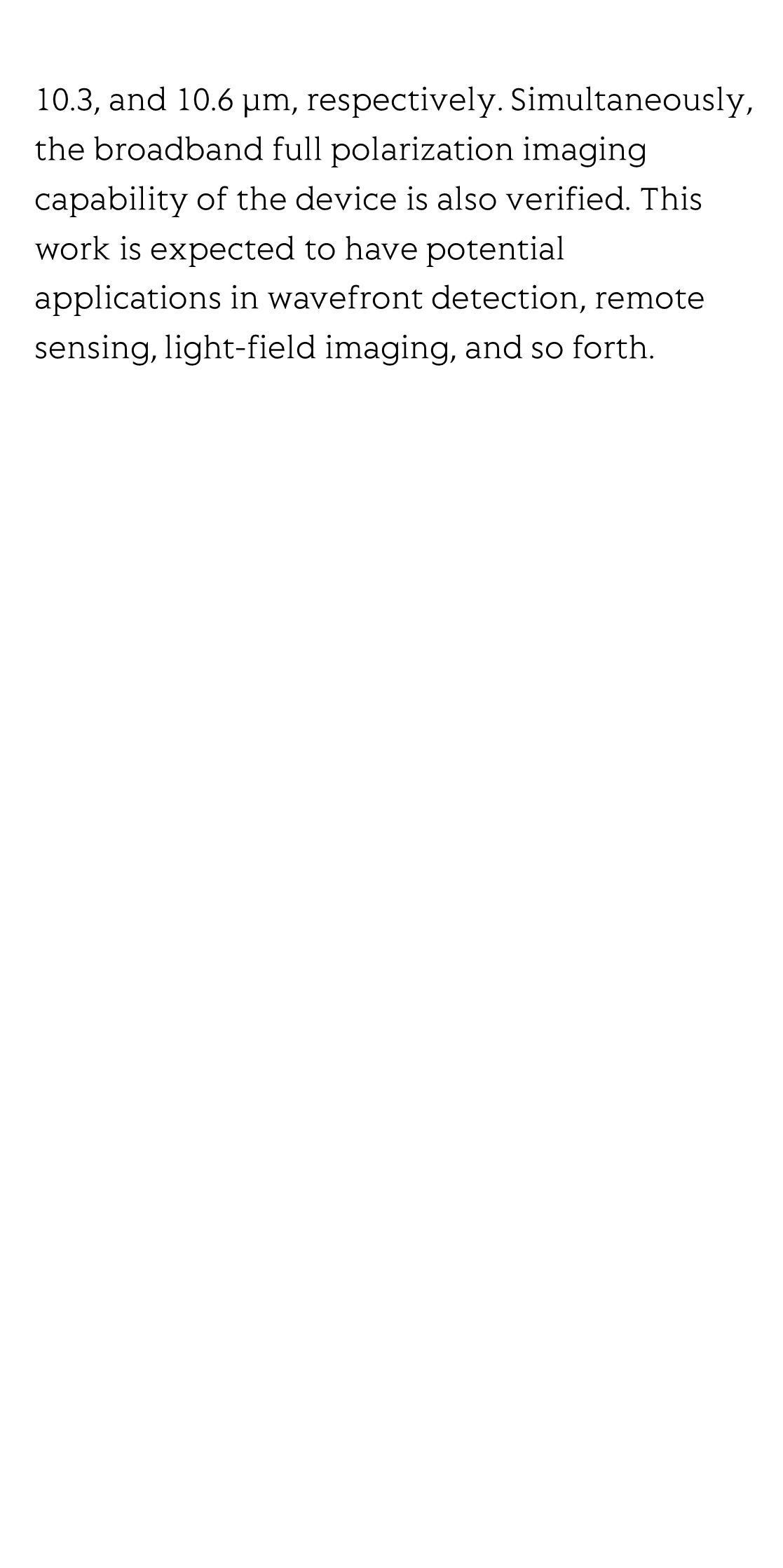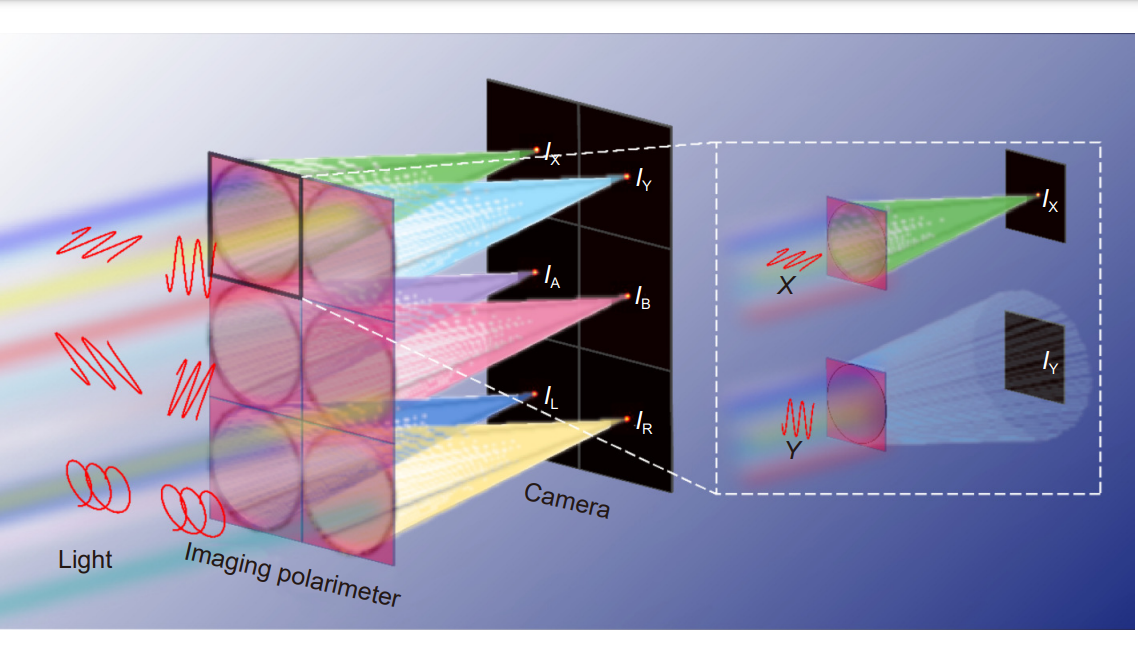(Peer-Reviewed) Crosstalk-free achromatic full Stokes imaging polarimetry metasurface enabled by polarization-dependent phase optimization
Yaxin Zhang 张雅鑫 ¹ ³, Mingbo Pu 蒲明博 ¹ ² ³, Jinjin Jin 靳金金 ¹, Xinjian Lu 鹿辛践 ¹ ³, Yinghui Guo 郭迎辉 ¹ ² ³, Jixiang Cai 蔡吉祥 ¹ ⁴, Fei Zhang 张飞 ¹ ², Yingli Ha 哈颖丽 ¹ ², Qiong He 何琼 ¹, Mingfeng Xu 徐明峰 ¹ ², Xiong Li 李雄 ¹ ³, Xiaoliang Ma 马晓亮 ¹ ³, Xiangang Luo 罗先刚 ¹ ³
¹ State Key Laboratory of Optical Technologies on Nano-Fabrication and Micro-Engineering, Institute of Optics and Electronics, Chinese Academy of Sciences, Chengdu 610209, China
中国 成都 中国科学院光电技术研究所 微细加工光学技术国家重点实验室
² Research Center on Vector Optical Fields, Institute of Optics and Electronics, Chinese Academy of Sciences, Chengdu 610209, China
中国 成都 中国科学院光电技术研究所 矢量光场研究中心
³ School of Optoelectronics, University of Chinese Academy of Sciences, Beijing 100049, China
中国 北京 中国科学院大学光电学院
⁴ Key Laboratory of Optoelectronic Technology and System, Ministry of Education, Chongqing University, Chongqing 400030, China
中国 重庆 重庆大学 光电技术及系统教育部重点实验室
Opto-Electronic Advances
, 2022-09-30
Abstract
Imaging polarimetry is one of the most widely used analytical technologies for object detection and analysis. To date, most metasurface-based polarimetry techniques are severely limited by narrow operating bandwidths and inevitable crosstalk, leading to detrimental effects on imaging quality and measurement accuracy.
Here, we propose a crosstalk-free broadband achromatic full Stokes imaging polarimeter consisting of polarization-sensitive dielectric metalenses, implemented by the principle of polarization-dependent phase optimization. Compared with the single-polarization optimization method, the average crosstalk has been reduced over three times under incident light with arbitrary polarization ranging from 9 μm to 12 μm, which guarantees the measurement of the polarization state more precisely.
The experimental results indicate that the designed polarization-sensitive metalenses can effectively eliminate the chromatic aberration with polarization selectivity and negligible crosstalk. The measured average relative errors are 7.08%, 8.62%, 7.15%, and 7.59% at 9.3, 9.6, 10.3, and 10.6 μm, respectively. Simultaneously, the broadband full polarization imaging capability of the device is also verified. This work is expected to have potential applications in wavefront detection, remote sensing, light-field imaging, and so forth.
Flicker minimization in power-saving displays enabled by measurement of difference in flexoelectric coefficients and displacement-current in positive dielectric anisotropy liquid crystals
Junho Jung, HaYoung Jung, GyuRi Choi, HanByeol Park, Sun-Mi Park, Ki-Sun Kwon, Heui-Seok Jin, Dong-Jin Lee, Hoon Jeong, JeongKi Park, Byeong Koo Kim, Seung Hee Lee, MinSu Kim
Opto-Electronic Advances
2025-09-25
Dual-frequency angular-multiplexed fringe projection profilometry with deep learning: breaking hardware limits for ultra-high-speed 3D imaging
Wenwu Chen, Yifan Liu, Shijie Feng, Wei Yin, Jiaming Qian, Yixuan Li, Hang Zhang, Maciej Trusiak, Malgorzata Kujawinska, Qian Chen, Chao Zuo
Opto-Electronic Advances
2025-09-25







